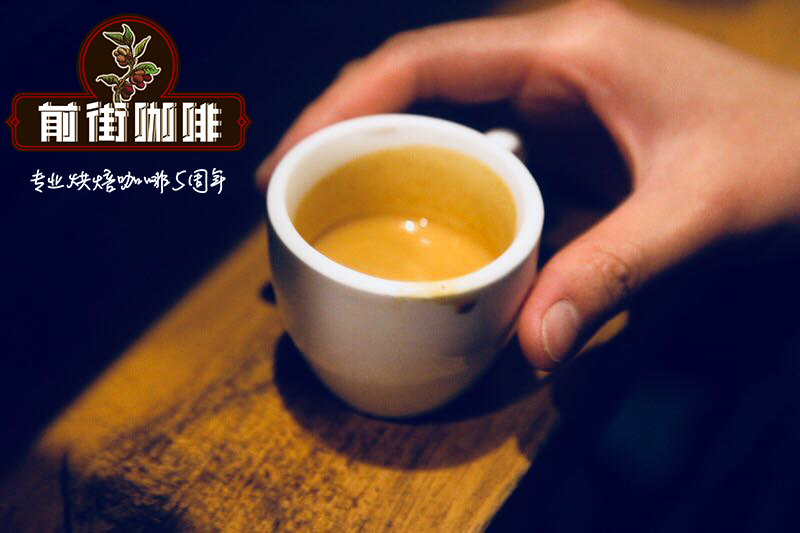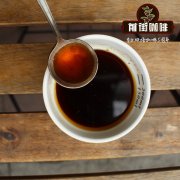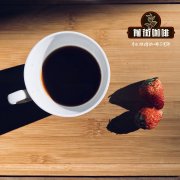Arabica Coffee Bean Variety Classification _ Arabica Coffee Bean characteristics _ Arabica Coffee bean Price

Professional coffee knowledge exchange More coffee bean information Please pay attention to coffee workshop (Weixin Official Accounts cafe_style)
Genetically classifying coffee has always been a complicated business. As far as the coffee varieties on the market are concerned, the most superficial classification is of course divided into Arabica coffee beans and Robusta (hereinafter referred to as radish beans)! Today, we're going to talk about the lineage of the members of the Arabica coffee bean family.
OK, now let's chat with the Arabica coffee bean family members ~ but here are only some of the main members, not all of them!
Two great families.
Tiepica
"Typica" iron pickup, the name sounds very majestic, but in fact it is not so strong... its constitution is weak, disease resistance is poor, easy to catch rust leaf disease, fruit yield is also small. It is one of Ethiopia's oldest native varieties, and many Arabica are derived from iron pickups!
Iron pickup top leaves for bronze is one of the characteristics, bean larger, into a sharp oval or thin pointed shape. We are familiar with, such as thunder, such as Mantenin, Blue Mountain, Elephant Bean, Kona, Yunnan Small Round Bean... and so on. They are all derivatives of iron pickups. (What a fraud!)
bourbon
Bourbon is an ancient fine variety juxtaposed with iron pickup, and some botanists believe that Bourbon is a variant of early iron pickup transplanted to Yemen.
Bourbon is almost entirely round beans, a little smaller than iron pickup, ripening later, but yielding 30% more than iron pickup. It is suitable for growing above 1200 meters above sea level, and the flavor is obviously more prominent than that below 1000 meters. However, Bourbon has a disadvantage that it ends up resting for a year. Round bourbon is vigorous, resistant to rust leaf disease is better than iron pickup, but the flavor is not inferior to it, or even better.
In 1810, Bourbon Island's round beans were partially mutated into pointed beans. This was the famous "pointed bourbon". Its characteristics were that its caffeine content was only half, its output was low, and its constitution was weak. It was extremely rare, just like a weak aristocratic beauty youth.
In addition, the biggest common point between iron pickup truck and bourbon is that they both need shade tree protection. If there is no shade tree to help them block the sun, it will not only be detrimental to their growth, but also greatly reduce the flavor of coffee beans produced.
gene mutant
Bourbon variants
Kenya
"SL28" and "SL24" are bourbon lineages screened and cultivated by French and British missionaries and researchers in Kenya at the beginning of the 20th century. For a hundred years, it has adapted to Kenya's high concentration of phosphoric acid soil, and the Kenya beans bred have special sour aroma, which is different from Bourbon beans in Central and South America. However, after its transplantation to Asia, it went out of flavor and could not show their characteristics.
yellow bourbon
Bourbon Amarello is a yellow-skinned bourbon variety unique to Sao Paulo, Brazil. Generally, coffee fruits will turn red after ripening, but yellow bourbon will not turn red after ripening. Huang Bourbon has become a popular fried chicken in the fine coffee world because he almost won the top three awards in the "Cup of Excellence"(Chinese name: Extraordinary Cup).
kaddura
Caturra, a single-gene variant of bourbon discovered in Brazil in the 1950s, has better yield and disease resistance than bourbon, is shorter and easier to harvest, but unfortunately it suffers from the same problems as bourbon--and ends up with a year off and a flavor that is comparable to or slightly inferior to bourbon beans.
But it is more adaptable, can be planted in high density, does not need shade trees, direct exposure in the sun can also be vibrant, so he also has a name_"Sun Coffee"(Sun Coffee).
Kadura is suitable for low altitudes of 700 meters to high altitudes of 1700 meters, but the higher the altitude, the better the flavor and the lower the soybean yield. There are also varieties of yellow cadura in Central and South America, but they are not as popular as yellow bourbon.
Pakas
In 1935, Salvadoran coffee farmer Don Alberto Pacas selected a high-yield San Ramon bourbon variety and planted it on the farm. In 1956, his coffee tree produced more fruit than the same kind of coffee tree. Professor Dr. William Cogwill of the University of Florida identified this bourbon as a genetic mutation and named it "Pacas".
Paccas are high in yield and quality and are popular in Central America, where 68 per cent of the current population is bourbon, compared with 29 per cent for Paccas.
Variants of the Iron Pickup family
Elephant bean
"Maragogype" was discovered in 1870 AD in the "Maragogype" producing area of "Bahia" in northeastern Brazil. It was named because the bean was at least three times larger than the average Arabica, which was the largest in the world. It is the most famous variant of iron pickup, the giant baby of iron pickup family.
Elephant beans are very suitable for 700 meters-800 meters of low altitude areas, but the flavor can be lacking fragrance Chen, no characteristics, even earthy smell. Therefore, it is advisable to select areas above 1000 meters above sea level, with better flavor, mild sour taste and pleasant sweet fragrance.
Kona
Although Kona is planted at an altitude of several hundred meters, it comes from Kona on the Big Island of Hawaii. With a mild sea breeze and fertile volcanic soil, it has an extremely clean sour fragrance and sweet feeling. Compared to Blue Mountain, which is higher in altitude, it is simply even higher.
blue Mountain
"Blue Mountain" is popular all over the world. Blue Mountain, which is hard to find, comes from the iron pickup family. Why is Blue Mountain so expensive? This was partly because it was mostly contracted out to the imperial army, and partly because it was not acclimatized and in poor condition once it left Jamaica. After 200 years of domestication, Blue Mountain evolved successfully in Jamaica, and its resistance to fruit rot was better than that of ordinary iron pickups. Where can Blue Mountain be tamed next? We can look forward to it.
A hybrid of two families.
new world
"Mundo novo" Bourbon fornication with iron pickup! The two families had illegitimate children! It was first discovered in Brazil and has high yields and strong disease resistance. The fly in the ointment is that it is up to 3 meters high and is not easy to harvest. Because of the good quality of the cup, it is known as the new hope of the Brazilian coffee industry, so it is named New World.
kaduai
Catuai was a hybrid of the New World and Kadulla. It could be said that it was a hybrid of two generations. It inherited the advantages of Kadura's low trunk and made up for the weakness of Arabica fruit. The result is solid and not easy to fall in case of strong wind. The biggest regret is that its overall flavor is slightly more monotonous than Cadura.
Kaduai also has red fruit, yellow fruit difference, red fruit than yellow fruit is more often awarded. Carduai, Cardura, New World and Bourbon are the four main coffee varieties in Brazil.
Pakamala
Pacamara is the crystallization of the iron-pica variant of the elephant bean and the bourbon variant of the pacas, and is also a hybrid, the bean size is second only to the elephant bean. In 2007 won Guatemala and Honduras "CoE" double champion, more arranged El Salvador's top three awards, El Salvador is a rising star.
Bastard children with radishes
Timo
Timor found Arabica and Radish Baby in East Timor, the island nation at the eastern end of the Nusa Tenggara Islands (ah, you guys...) Timo, closer to Arabica. Timo has a low acidity and lacks character. It is often used in Taiwan to make low-cost formula beans. Alas, on the importance of genes…
However, East Timor also has washed high-altitude purebred iron bika. Before buying, be sure to find out whether it is a hybrid or a purebred iron bika washed bean. The quality of the two is far different. The former is plain and the latter is amazing.
Katimo
In 1959, Portugal moved Bourbon variety Kadura to East Timor and mixed it with Timo with radish bean lineage to breed a hybrid second generation Katimo with strong disease resistance and yield.
Although Katimo inherited the advantages of turnip beans, he also inherited the genes for poor flavor. In recent years botanists around the world have turned to cross-breeding Arabica and Katimodo bands in an attempt to reduce the radish bean lineage in order to improve the bad reputation of the poor Katimodo Cup test.
Icato
"Icatu" In the past, Arabusta "Arabusta", a mixture of Arabica and radish beans, improved yield and disease resistance, but coffee flavor has been poor. Scientists then used Arabusta to crossbreed with Arabica varieties such as Kadura, New World and Bourbon for many generations, gradually reducing the bad taste of radish beans and improving the aroma of Arabica beans, thus giving birth to a multi-generation hybrid excellent variety-Icato.
In addition, Arabica-radish hybrids include Ruiru 11, Chandragiri, etc., which generally inherit the strong disease resistance of radish beans, but weaken the flavor of Arabica. For coffee lovers, whether these hybrids can have satisfactory performance remains to be further cultivated and tested!
This article aims to give coffee newcomers a brief understanding of Arabica varietal classification, which cannot be used as a rigorous botanical taxonomic reference.
Arabica Coffee Bean Brand Recommendations
Front Street Coffee roasts Arabica beans with full guarantees of brand and quality. More importantly, the cost performance is extremely high, 227 grams per pack, the price is only about 70-90 yuan. According to the calculation of 15 grams of coffee beans per cup of coffee, a pack can make 15 cups of coffee, each cup only costs about 5 or 6 yuan, compared with the price of hundreds of cups sold in cafes.
Qianjie Coffee: Guangzhou's baking shop, small store but a variety of beans, can find a variety of famous beans, but also provide online store services. https://shop104210103.taobao.com
Important Notice :
前街咖啡 FrontStreet Coffee has moved to new addredd:
FrontStreet Coffee Address: 315,Donghua East Road,GuangZhou
Tel:020 38364473
- Prev

Yemeni mocha coffee-what is the ancient method of tanning? How to drink ancient sun-tanned coffee
Professional coffee knowledge exchange more coffee bean information please follow the coffee workshop (Wechat official account cafe_style) sun drying English is called natural, washing is called washed; so sun-dried beans is the most primitive and natural way, the coffee cherry (fruit) is directly exposed into dried fruit, and then the peel and pulp is removed; there are many variables, such as fruit maturity
- Next

Arabica coffee beans must taste better than Robusta coffee beans. Is Arabica coffee beans expensive?
Professional coffee knowledge exchange more coffee bean information Please follow the coffee workshop (Wechat official account cafe_style) Coffee varieties are generally divided into Arabica coffee beans (Arabica), Robusta (Robusta) and Liberia (Liberica). Everyone is most familiar with Arabica coffee beans, followed by Robusta, which should be no stranger, and
Related
- Beginners will see the "Coffee pull flower" guide!
- What is the difference between ice blog purified milk and ordinary milk coffee?
- Why is the Philippines the largest producer of crops in Liberia?
- For coffee extraction, should the fine powder be retained?
- How does extracted espresso fill pressed powder? How much strength does it take to press the powder?
- How to make jasmine cold extract coffee? Is the jasmine + latte good?
- Will this little toy really make the coffee taste better? How does Lily Drip affect coffee extraction?
- Will the action of slapping the filter cup also affect coffee extraction?
- What's the difference between powder-to-water ratio and powder-to-liquid ratio?
- What is the Ethiopian local species? What does it have to do with Heirloom native species?

